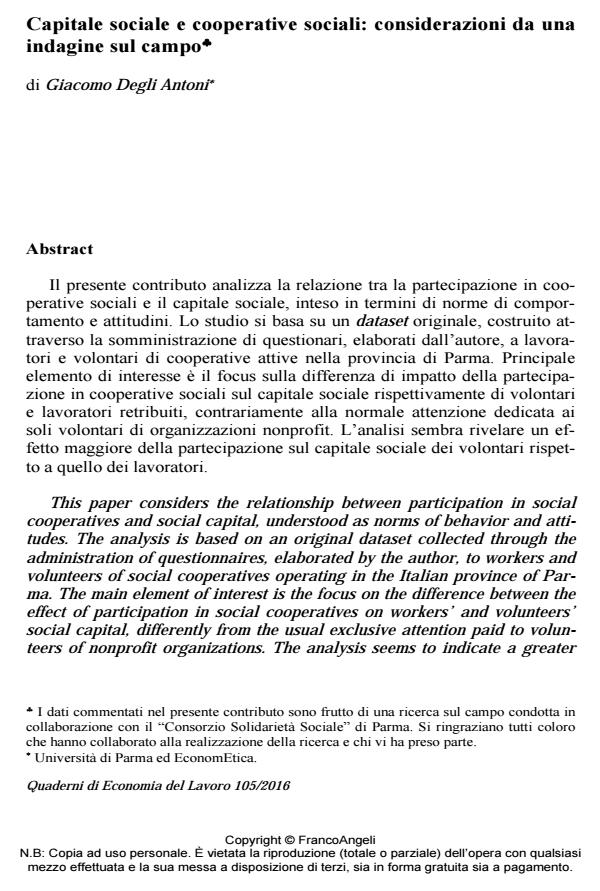Capitale sociale e cooperative sociali: considerazioni da una indagine sul campo
Titolo Rivista QUADERNI DI ECONOMIA DEL LAVORO
Autori/Curatori Giacomo Degli Antoni
Anno di pubblicazione 2017 Fascicolo 2016/105
Lingua Italiano Numero pagine 13 P. 151-163 Dimensione file 191 KB
DOI 10.3280/QUA2016-105007
Il DOI è il codice a barre della proprietà intellettuale: per saperne di più
clicca qui
Qui sotto puoi vedere in anteprima la prima pagina di questo articolo.
Se questo articolo ti interessa, lo puoi acquistare (e scaricare in formato pdf) seguendo le facili indicazioni per acquistare il download credit. Acquista Download Credits per scaricare questo Articolo in formato PDF

FrancoAngeli è membro della Publishers International Linking Association, Inc (PILA)associazione indipendente e non profit per facilitare (attraverso i servizi tecnologici implementati da CrossRef.org) l’accesso degli studiosi ai contenuti digitali nelle pubblicazioni professionali e scientifiche
Il presente contributo analizza la relazione tra la partecipazione in cooperative sociali e il capitale sociale, inteso in termini di norme di comportamento e attitudini. Lo studio si basa su un dataset originale, costruito attraverso la somministrazione di questionari, elaborati dall’autore, a lavoratori e volontari di cooperative attive nella provincia di Parma. Principale elemento di interesse è il focus sulla differenza di impatto della partecipazione in cooperative sociali sul capitale sociale rispettivamente di volontari e lavoratori retribuiti, contrariamente alla normale attenzione dedicata ai soli volontari di organizzazioni nonprofit. L’analisi sembra rivelare un effetto maggiore della partecipazione sul capitale sociale dei volontari rispetto a quello dei lavoratori
- Investigating the link between social cooperation sector and economic well‐being of Italian provinces through the lens of social capital Giuseppe Terzo, in Annals of Public and Cooperative Economics /2022 pp.1041
DOI: 10.1111/apce.12349
Giacomo Degli Antoni, Capitale sociale e cooperative sociali: considerazioni da una indagine sul campo in "QUADERNI DI ECONOMIA DEL LAVORO" 105/2016, pp 151-163, DOI: 10.3280/QUA2016-105007